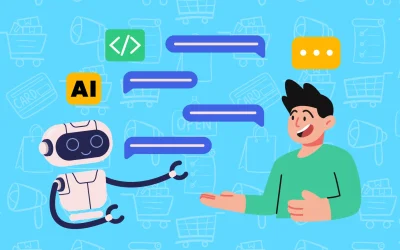Gone are the days when a static contact form and a generic call-to-action were enough to convert visitors into customers. Today, website visitors expect more. They want engagement, relevance, and real-time interaction. Enter conversational marketing, a strategy that leverages real-time conversations to guide visitors through the buyer’s journey and ultimately boost conversions.
But what exactly is conversational marketing, and why is it changing the way websites sell? In this post, we’ll break it all down and show you how this approach is redefining modern lead generation and customer engagement.
What Is Conversational Marketing?
Conversational marketing is a personalized, dialogue-driven approach to marketing that engages website visitors in real-time through tools like AI chatbots, live chat, and messaging apps. Instead of forcing visitors to fill out a form and wait hours (or days) for a response, conversational marketing invites them into a two-way interaction that delivers immediate value.
Think of it as replacing the traditional sales funnel with an ongoing conversation.
Why Static Opt-in Forms Are Losing Their Impact
Static opt-in forms have long been a staple of lead generation, but they come with limitations:
- They create friction.
- They lack personalization.
- They assume every visitor is on the same stage of their buyer journey.
Conversational marketing eliminates these barriers by offering a dynamic experience that adapts to the user’s intent, interests, and behavior in real time.
Example: Instead of asking a visitor to “Download our free guide,” a chatbot might ask, “What kind of marketing challenges are you facing right now?” Based on the answer, it delivers the most relevant resource or offer, instantly.
How Conversational Marketing Transforms the Website Experience
Let’s look at how conversational marketing is revolutionizing website engagement:
1. Real-Time Lead Qualification
AI chatbots can ask smart, strategic questions to qualify leads on the spot. This saves your team time and ensures only sales-ready leads are passed on.
2. 24/7 Engagement
Unlike human teams, chatbots don’t sleep. They can engage with visitors around the clock, capturing leads even when your office is closed.
3. Hyper-Personalized Interactions
A well-trained chatbot can tailor responses based on user behavior, referral source, or even geographic location — making the experience feel like a one-on-one conversation.
4. Shorter Sales Cycles
By removing friction and delivering instant value, conversational marketing accelerates the path to conversion. Visitors get the answers they need without delay.
Key Tools Powering Conversational Marketing
- AI Chatbots: Custom-trained to understand your business, answer questions, and pre-qualify leads.
- Live Chat: Enables your team to step in when high-value conversations are needed.
- Messaging Apps: Channels like WhatsApp and Facebook Messenger can also be part of your conversational ecosystem.
- CRM Integrations: Sync conversations with your CRM for seamless lead tracking and follow-up.
Why This Approach Works So Well
It aligns with how people prefer to interact. In a world dominated by messaging and instant replies, web users expect the same responsiveness from brands. Conversational marketing meets those expectations.
It builds trust faster. Human-like conversations create a sense of connection, making it easier to nurture relationships and move users toward a purchase decision.
It reduces bounce rates. When visitors feel engaged right away, they’re more likely to stick around and convert.
Can You Use Conversational Marketing Alongside Traditional Strategies?
Absolutely. In fact, they often work better together. Chatbots can guide visitors to lead magnets, schedule calls, or provide personalized resources. Meanwhile, your email campaigns, content marketing, and sales funnels can continue nurturing leads in the background.
Pro tip: Use chatbot conversations to segment users and trigger personalized email follow-ups based on their responses.
Real-World Example
Let’s say you’re a digital agency offering SEO services. A visitor lands on your site and sees a chatbot pop up:
“Hi there! Are you looking to improve your website’s ranking on Google?”
The visitor clicks “Yes” and is guided through a few questions. By the end of the conversation, the chatbot has collected their website URL, budget range, and main goals and offers to schedule a call with an SEO specialist. All of this happens in under 2 minutes.
That’s the power of conversational marketing.
The Future of Selling Is Conversational
Websites are no longer digital brochures, they’re interactive experiences. Conversational marketing turns your site into an active participant in the sales process, guiding users with empathy, relevance, and real-time value.
If your business is still relying solely on forms and follow-ups, it might be time to evolve. Because in 2025 and beyond, the brands that win will be the ones that talk with their customers, not at them.
Want to see conversational marketing in action? Check out OptinBot.io, our custom chatbot solution designed to help you capture more leads and spark meaningful conversations.




